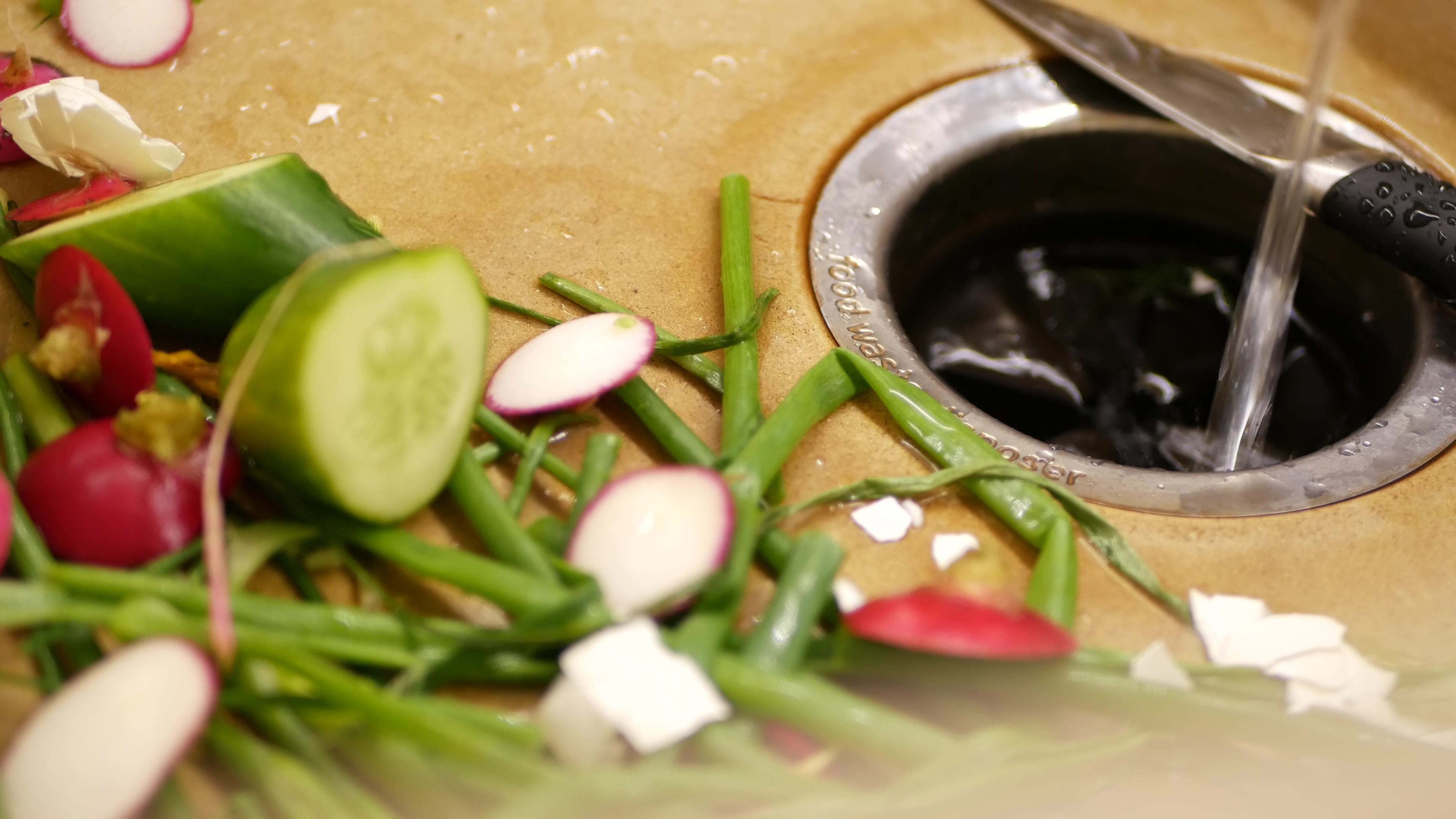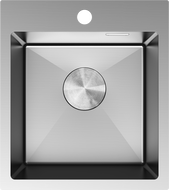
A garbage disposal, also known as a waste grinder, is associated by many with American kitchens and scenes from TV shows, where during washing up, food scraps are directly removed from the plate into the sink's drain. However, this does not result in the sink clogging. Why? Because it has a kitchen grinder installed, which handles all kinds of kitchen waste excellently. Together with water, the waste is sent to the sewage system very finely chopped.
Garbage Disposal – What Is It and How Does It Work?
A garbage disposal designed for grinding kitchen waste is a relatively new invention in Poland, yet more and more people are opting to install this type of device in their kitchens. Many countries not only allow but even require the use of disposals, as it allows for the almost complete elimination of organic waste. This way, significantly less garbage is generated.
The construction of a grinder is very simple; it is made of stainless steel and consists of a tube with two cutting plates mounted inside. The device is connected to power, and when the grinder is turned on, the rotating plates chop the waste thrown into it into very small pieces. The chopped waste, along with water, goes to the sewage system. There is no need to worry about the possibility of clogging the drain, as the ground waste is really very small, significantly smaller than those that occasionally squeeze through the sieve standardly placed in the drain.
What Can Be Put into the Garbage Disposal?
Garbage disposal owners recommend it mainly because you can throw virtually all organic waste into it. Starting from coffee grounds or tea leaves to vegetable and fruit peels, eggshells, seeds, leaves, plant fragments, wilted flowers, and even small bones. Just throw them into the grinder's opening and turn on the grinder. Then, simply let cold water flow, and the ground waste exits the sink's drain, flowing directly into the sewer pipe. The water simultaneously cools the grinder mechanism.
To prevent damage to the device, mainly soft organic waste should be put into it. Thus, one should not dispose of nutshells or large bones in this way. Furthermore, hot grease should not be poured into the grinder, as this is not only about the grinder itself, but rather that grease can harden when mixed with water, forming a plug with the ground waste, which effectively clogs the sewer pipe.
Installing the Garbage Disposal
Installing a garbage disposal is a relatively simple task, and most people manage it without needing professional help. The most important thing is to have a drain hole of appropriate width, which is typically 90 mm. Therefore, if you plan to install a kitchen waste grinder, you must keep this in mind when buying a sink. Before starting installation, you should also familiarize yourself with dimensions such as the height of the grinder, the distance from the bottom of the sink basin to the center line of the inlet hole, and the width of the grinder.
The sewer inlet should be about 5 cm below the opening of the grinder. The device is placed in the sink opening, then seals are applied, the grinder is secured, and a sealing collar is placed to seal the gap between the grinder and the edges of the sink opening.

Know the Types of Garbage Disposals
All available garbage disposals on the market are electric devices, differing in features such as grinder power, installation dimensions, chamber size, and noise level. When it comes to the method of operation, we distinguish:
-
plug grinder,
-
pneumatic grinder,
-
wireless grinder.
The first one starts automatically when the sink is clogged with a plug, the second is powered by compressed air, and the last operates using a remote control. The size of the chamber equipped with the grinder is especially important when a lot of cooking takes place at home, and thus a lot of waste is produced that will be drained using the grinder.
Garbage Disposal – Advantages
We won't convince you that a garbage disposal is an absolutely essential device, and it's completely without flaws; it's worth considering purchasing a grinder. With it, you can significantly reduce the amount of garbage produced, which can translate to lower waste disposal fees. Therefore, this is not only an ecological solution but also an economical one.
Moreover, the garbage disposal helps in keeping the sink clean, and it also eliminates the need to clean the sieve in the drain and remove scraps that have fallen into the drain. The pipe that drains the waste to the sewage system remains clean, and thus no unpleasant odors appear in it. This is another argument in favor of installing a waste grinder. When it comes to the disadvantages of such a device, the most important is having the appropriate sink.


















